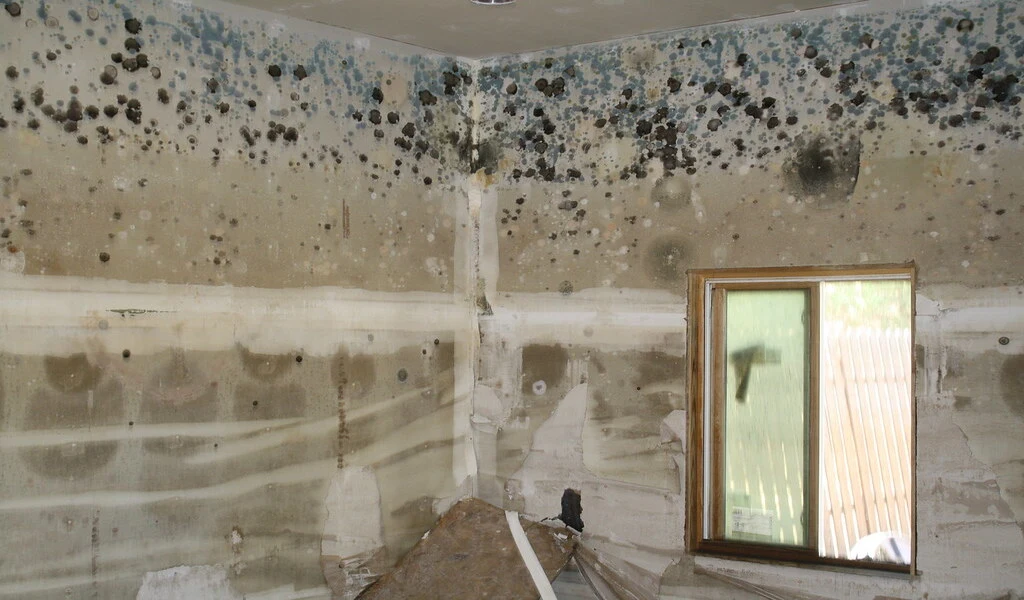Learning
9 Alarming Mould Effects on Health – How to Avoid?

Mould, in spite of frequently being undervalued, has the propensity to critically affect our health and well-being. Frequently discovered in little nooks and crannies of our dwellings, nestled in waterlogged basements, or slyly camouflaged within our air-conditioning systems, the provision for various noteworthy health issues is nurtured by mould.
As it ranges from inflaming allergic reactions and fighting against respiratory functionality to sparking considerably grave complications, the perils associated with mould contact are legitimate and considerable.
Unfurling its effects further, this composition plunge into denoting the six most distressful health hazards triggered by mould which individuals may confront. Simultaneously, what holds paramount importance is that we also outline proactive tactics empowering you with the preventive measure against the situations where this uninvited microorganism infiltrates personal spaces in your house, undermining your health.
Getting yourself conversant with these potential health threats painted by moulds and the preventative steps against them carve gateway towards facilitating a serene, purified environment promoting the welfare of you and your dearest ones. Doe your safety starts at home, furnishing yourself with this critical knowledge averts risks of being caught off guard by the invasion of moulds.
The Dangers of Mould Exposure:
Mould, commonly found in many homes, can have insidious and alarming effects on our health.
Mould cleaning companies in the UK such as Mould Removal London have also reported a concerning trend where they’ve encountered a significant number of individuals experiencing health issues while dealing with mould-infested areas. Cleaning mould is a necessary but potentially risky task, and it requires proper safety measures and precautions to prevent adverse health effects.
These companies have observed that some of the health problems experienced by both their workers and homeowners during mould remediation efforts include aggravated respiratory symptoms, allergic reactions, and skin irritations.
In the following sections, we’ll explore each threat in more detail, including the specific symptoms and health implications. Additionally, we’ll provide practical tips on how to identify and mitigate mould in your living spaces to help you avoid these alarming health risks.

Section 1: Respiratory Issues
Mould spores are tiny and easily airborne, making inhalation a common route of exposure. For individuals with asthma or allergies, mould can be a powerful trigger. It can lead to symptoms like wheezing, coughing, shortness of breath, and chest tightness. In severe cases, it may even cause asthma attacks, making it a significant concern for those with pre-existing respiratory conditions.
Section 2: Allergic Reactions
Mould can act as a potent allergen, sparking a wide range of allergic responses. Common symptoms include sneezing, runny or stuffy nose, itchy or watery eyes, and skin rashes. These reactions can vary in intensity from mild discomfort to severe allergic rhinitis or allergic conjunctivitis, making mould a particular nuisance for those prone to allergies.
Section 3: Skin Irritation and Infections
Prolonged exposure to mould can also result in skin irritation. Itchy or red skin, hives, or dermatitis are common manifestations. Additionally, mould can lead to fungal skin infections, causing further discomfort and requiring medical treatment to alleviate the symptoms.
Section 4: Neurological Symptoms
In some cases, mould exposure has been associated with neurological symptoms. These may include headaches, dizziness, memory problems, and difficulty concentrating. While the exact mechanisms are not fully understood, these symptoms underscore the need to address mould issues promptly.

Section 5: Asthma Attacks and Exacerbation
Mould is a known trigger for asthma, and individuals with this condition are particularly vulnerable. Mould spores can inflame the airways and lead to asthma attacks. For those already suffering from asthma, mould exposure can worsen their condition, causing more frequent and severe symptoms.
Section 6: Immune System Suppression
Mould exposure can weaken the immune system, making individuals more susceptible to infections. This immune system suppression can result in more extended recovery times from illnesses and increased vulnerability to other health issues.
Section 7: Mycotoxins
Certain moulds produce mycotoxins, toxic compounds that can have profound health effects. Exposure to mycotoxins has been linked to a range of symptoms, including neurological issues, gastrointestinal problems, and even organ damage. Mycotoxin exposure is rare but can be especially concerning when it occurs.
Section 8: Aggravation of Pre-existing Conditions
Mould exposure can worsen the symptoms of individuals with chronic respiratory conditions or compromised immune systems. Those with these conditions often experience more frequent and severe symptoms when exposed to mould, which can lead to a lower quality of life and increased healthcare costs.

Section 9: Long-term Health Implications
While some may dismiss mould exposure as a minor inconvenience, it’s essential to recognize its potential for long-term health implications. Ongoing mould exposure, even at low levels, can lead to persistent health issues. These may not become apparent until years later, underscoring the importance of addressing mould problems promptly.
Understanding the dangers of mould exposure is the first step in protecting your health and that of your loved ones. In the following sections, we’ll delve into ways to identify and mitigate mould in your living spaces to avoid these alarming health risks.
Conclusion: Tips to Prevent Mould Growth and Protect Your Health
In light of the alarming dangers associated with mould exposure, it’s imperative to take proactive steps to safeguard your health and maintain a mould-free living environment. Mould is a silent intruder that can wreak havoc on your well-being if left unchecked. Here are some essential tips to prevent mould growth and protect your health:
Control Moisture: Mould thrives in damp conditions. Ensure your home is well-ventilated and keep humidity levels in check, ideally below 50%. Use dehumidifiers if necessary, especially in areas prone to moisture, such as basements and bathrooms.
Fix Leaks and Water Issues: Promptly repair any leaks or water damage in your home. Mould can flourish in the aftermath of water intrusion, so addressing these issues swiftly is crucial.
Proper Ventilation: Use exhaust fans in kitchens and bathrooms to reduce humidity. Ensure your home has good ventilation, allowing air to circulate effectively.
Regular Cleaning: Regularly clean and dust your home to prevent mould spores from accumulating. Pay extra attention to potential mould-prone areas like bathrooms, kitchens, and basements.
Monitor Indoor Plants: Overly damp soil in indoor plants can encourage mould growth. Be mindful of your plant care routines and adjust watering as needed.
Use Mould-Resistant Materials: When renovating or building, consider using mould-resistant drywall, paint, and insulation in your home. These materials can help reduce the likelihood of mould growth.
Remove Mould Promptly: If you spot mould, remove it immediately using appropriate cleaning techniques and protective gear. Small areas (less than about 10 square feet) can often be tackled by homeowners, but larger infestations should be handled by professionals.
Regular Inspections: Periodically inspect your home for signs of mould, especially if you’ve had past issues. Early detection can prevent mould from spreading.
Air Purification: Consider using HEPA air purifiers to remove mould spores and other allergens from the air in your home.
Consult Professionals: If you’re unsure about the extent of a mould problem in your home or if it’s causing health issues, consult with mould remediation professionals and healthcare providers for guidance.
By following these preventative measures and staying informed about the dangers of mould exposure, you can significantly reduce the risks to your health. Your home should be a place of safety and well-being, and taking these steps will help ensure it remains just that. Protect your health by being proactive in the fight against mould.
Learning
First-Time Buyer’s Guide to the UK Property Market

Entering the UK property market as a first-time buyer can feel both exciting and daunting. The process is filled with potential pitfalls and complex decisions, but with the right guidance, it can be navigated smoothly. The estate agents in Yorkshire demystify the journey from the initial decision to buy a home to the moment you step over the threshold of your new property.
Understanding Your Financial Position
The first and perhaps most crucial step in the home-buying process is understanding your financial situation. This includes assessing your savings, income, and current debts. Here’s how you can prepare:
1. Deposit: Generally, you’ll need at least 5% of the property price as a deposit, though aiming for 10% or more can provide better mortgage rates.
2. Income and Expenses: Use a budget planner to assess your monthly income against your expenses. This will help you understand how much you can afford in monthly mortgage repayments.
3. Credit Score: Lenders will evaluate your credit score to determine your mortgage eligibility. So it’s important to have a good credit score, and you should work on it if required.
4. Mortgage Options: Speak to a mortgage advisor to understand different types of mortgages, such as fixed-rate, variable-rate, and help-to-buy schemes.
Getting a Mortgage Agreement in Principle
A Mortgage Agreement in Principle (AIP) is a statement from a lender indicating how much they’ll likely lend you. You will be a more attractive buyer with an AIP as it shows sellers you’re serious and financially prepared.
Deciding What You Want
Before you start viewing properties, it’s essential to know what you’re looking for. Consider the following factors:
1. Location: Proximity to work, schools, public transport, and amenities are key. Research neighbourhoods to find the best fit for your lifestyle.
2. Property Type: Decide whether you want a flat, terraced house, semi-detached, or detached property. Each has its pros and cons.
3. Must-Haves: Make a list of non-negotiables, such as the number of bedrooms, garden size, and parking facilities.
4. Future Proofing: Consider your future needs. Are you planning to start a family? Do you need space for a home office?
Starting the Property Search
With a clear idea of what you’re looking for, you can begin your property search. Here are some tips:
1. Use Online Portals: Websites like Rightmove, Zoopla, and OnTheMarket are excellent starting points. Set up alerts to get notified of new listings that meet your criteria.
2. Visit Estate Agents: Register with local estate agents who can provide insights into the market and inform you of new properties before they’re listed online.
3. Attend Viewings: Don’t rush this part. Visit several properties to get a feel for what’s available in your price range.
Making an Offer
Once you find a property you love, it’s time to make an offer. Here’s how to approach it:
1. Research: Check the selling prices of similar properties in the area to gauge a fair offer.
2. Negotiate: Don’t be afraid to negotiate. The starting point is most usually the asking price.
3. Conditions: You might include conditions in your offer, such as the inclusion of certain fixtures or a specific moving date.
The Legal Process
If your offer is accepted, the legal process begins. You’ll need a solicitor or licensed conveyancer to handle the legalities. Here’s what to expect:
1. Conveyancing: This is the legal transfer of property ownership. Your solicitor will handle this, including conducting searches, dealing with the Land Registry, and transferring the funds.
2. Surveys and Inspections: Arrange for a property survey to check for structural issues. There are different types of surveys, from basic condition reports to full structural surveys.
3. Mortgage Finalisation: Once the survey is complete and satisfactory, your mortgage can be finalised.
4. Exchange of Contracts: This is when the sale becomes legally binding. You’ll pay your deposit at this stage.
5. Completion: On the agreed completion date, the remaining money is transferred, and you receive the keys to your new home.
Moving In
Moving day can be hectic, but planning can ease the stress:
1. Hire a Removal Company: Book a reliable removal company well in advance. Discover the best deals by getting quotes from multiple companies.
2. Pack Strategically: Label your boxes by room and keep essential items accessible.
3. Notify Utilities and Change Address: Inform your utility providers of your move date and update your address with banks, the DVLA, and other important institutions.
Settling In
Get settled. Introduce yourself to the neighbours, familiarise yourself with the local area, and really start to make the place your own.
Here are a few final tips:
1. Safety Checks: Make sure that your smoke alarms and carbon monoxide detectors are working, and make sure that you know where the gas and electricity meters are located.
2. Maintenance Plan: Keep a record of the smooth functioning of your new home with a maintenance schedule, complete with regular checks and seasonal tasks.
3. Personal Touches: Add personal touches to make the space feel like home. This can be from putting up family photos or redoing the decoration in your rooms.
Conclusion
Buying your very first home in the UK is most definitely a milestone, difficult and full of challenges but rewarding in the end. Such a philosophy guides you in understanding finances and knowing what you want to achieve from detailed research, and seeking professional advice that confidently helps you navigate the property market. Yes, the journey may have its hurdles, but in the end—owning your own home—the reward will be worth the effort. Welcome to your new chapter!
SEE ALSO: Conquer the Chaos: Hacks to Clean Your Home in Half the Time
Learning
5 Health Benefits of Regular Pedicures

There’s nothing quite like a pedicure to keep your feet looking and feeling their best, but did you know that pedicures do more than simply enhance the appearance of your feet? Many people don’t realize that regular pedicures can come with a wide range of health benefits that can promote the well-being of your feet, so here are some ways that your routine pedicure keeps both your toenails and feet in the best condition possible!
Smoother Skin
One of the biggest misconceptions about pedicures is that they only cater to and look after your toenails. While you’ll definitely be leaving each session with a fresh coat of nail polish, your pedicure can also do wonders for the health of your skin. Aside from trimming and shaping your nails and cuticles, you’ll notice that your nail technician also dedicates a few steps to the skin of your feet.
After inspecting your feet and looking for any issues or imperfections that may need to be addressed, your technician will work on an exfoliating scrub to remove any dead skin cells. This step may also be aided by a foot file, which can be used to buff away any calluses and other problem areas manually.
Softer Skin
After your nail technician addresses all the problem areas of your feet and removes any unwanted dead skin cells, he or she will often massage in a moisturizing product, such as lotion, cream, or butter, to ensure that your skin is properly moisturized. These products contain skin-loving ingredients that will ensure that your feet have everything they need to look and feel their best so that you can walk out of your pedicure with a renewed sense of confidence.
Healthier Nails
After your pedicure session, your nails will not only look better due to the fresh coat of nail polish, but they’ll also be healthier and stronger. This is because your nail technician takes their time to ensure that your nails are properly looked after through steps that include deep cleaning, nail trimming, nail filing, and cuticle care. All of these things work together to prevent issues like ingrown nails from occurring, all the while improving the appearance of your nails.
Increased Blood Circulation
While the specific steps included in your pedicure will depend on the beauty salon, most pedicures will have a massage step somewhere in the mix. One of the often overlooked benefits of these massages is the increased blood circulation, which can deliver more nutrients and oxygen to your feet and nails, promoting their health and appearance. Aside from that, better blood flow means reduced tension and soreness, as well as better distributed heat throughout your body.
Reduced Infections
A significant amount of dirt and bacteria can build up on your feet without you even realizing it, but pedicures can be a great way to prevent these from happening in the first place. The exfoliation step of a pedicure removes dead skin cells as well as all the debris that may have accumulated underneath, and the deep cleaning of your toenails and cuticles also gets rid of any impurities that may have slipped beneath them, which can stop infections from happening.
These are some of the many health benefits that you can look forward to at your next pedicure appointment. However, it’s worth noting that you need to book regular sessions to truly reap all the rewards. This can be difficult, especially when you don’t feel like driving to your nearest nail salon after a long day, but the good news is that you can enjoy the salon experience in the comfort of your own home with a home pedicure service.
Learning
Commercial Boiler Installation Services London

For businesses in the bustling city of London, having a reliable heating system is crucial. Whether you’re opening a new office, expanding your current premises, or simply upgrading an outdated system, commercial boiler installation services for businesses in London are essential to ensure your operations run smoothly and efficiently. Proper installation and maintenance of commercial boilers can make a significant difference in energy efficiency, cost savings, and the overall comfort of your workspace.
The Importance of Professional Installation
When it comes to installing a commercial boiler, professional expertise is paramount. Here’s why:
- Efficiency and Performance: Professional installation ensures that your boiler operates at peak efficiency, reducing energy consumption and lowering utility bills. A well-installed boiler can effectively meet the heating demands of your business without unnecessary energy waste.
- Safety: Commercial boilers are complex systems that require precise installation to operate safely. Professional installers adhere to stringent safety standards and regulations, minimizing the risk of accidents and ensuring the safety of your employees and premises.
- Compliance with Regulations: Commercial properties are subject to various building codes and regulations. Professional installers are well-versed in these requirements and ensure that your boiler system complies with all local laws and standards.
- Longevity and Reliability: Proper installation is critical to the longevity and reliability of your boiler. A professional installation can prevent common issues such as leaks, pressure problems, and system failures, ensuring that your boiler runs smoothly for years to come.
Key Considerations for Commercial Boiler Installation
When planning for a commercial boiler installation, several factors need to be considered:
- Type of Boiler: The type of boiler you choose will depend on your business’s specific needs. Options include gas boilers, oil boilers, and electric boilers, each with its own set of advantages. Consulting with a professional can help you determine the best choice for your business.
- Sizing and Capacity: The boiler’s size and capacity must match the heating demands of your commercial space. An undersized boiler will struggle to meet your needs, while an oversized one will lead to inefficiencies and higher costs.
- Location: The placement of your boiler affects its efficiency and accessibility for maintenance. Professional installers can help you choose the optimal location for your boiler.
- Integration with Existing Systems: If you’re upgrading or replacing an existing boiler, it’s essential to ensure compatibility with your current heating system. Professional installers can seamlessly integrate the new boiler with your existing setup.
Choosing the Right Installation Service

Selecting the right installation service provider is crucial to the success of your boiler installation project. Consider the following when making your choice:
- Experience and Expertise: Look for a provider with a proven track record in commercial boiler installations. Experienced installers can handle the complexities of commercial systems and provide high-quality workmanship.
- Reputation: Check reviews and testimonials from previous clients to gauge the provider’s reliability and customer satisfaction.
- Comprehensive Services: Choose a provider that offers a full range of services, including installation, maintenance, and repair. This ensures that all your boiler needs are met by a single, trusted source.
In London, ROWLEN is a reputable name known for delivering top-notch commercial boiler installation services. Their team of experts is dedicated to providing efficient, safe, and compliant installations tailored to the unique needs of businesses.
Conclusion
Investing in professional commercial boiler installation services for businesses in London is essential for ensuring efficiency, safety, and long-term reliability. By choosing an experienced and reputable service provider like ROWLEN, you can rest assured that your heating system will be installed correctly and maintained to the highest standards. Proper installation not only enhances the performance of your boiler but also contributes to the overall comfort and productivity of your business environment.
SEE ALSO:
-

 News3 years ago
News3 years agoLet’s Know About Ultra High Net Worth Individual
-
Entertainment2 years ago
Mabelle Prior: The Voice of Hope, Resilience, and Diversity Inspiring Generations
-

 Health3 years ago
Health3 years agoHow Much Ivermectin Should You Take?
-

 Tech2 years ago
Tech2 years agoTop Forex Brokers of 2023: Reviews and Analysis for Successful Trading
-

 Lifestyles2 years ago
Lifestyles2 years agoAries Soulmate Signs
-

 Movies2 years ago
Movies2 years agoWhat Should I Do If Disney Plus Keeps Logging Me Out of TV?
-

 Health3 years ago
Health3 years agoCan I Buy Ivermectin Without A Prescription in the USA?
-

 Learning2 years ago
Learning2 years agoVirtual Numbers: What Are They For?
